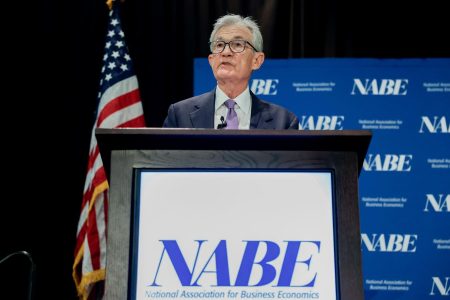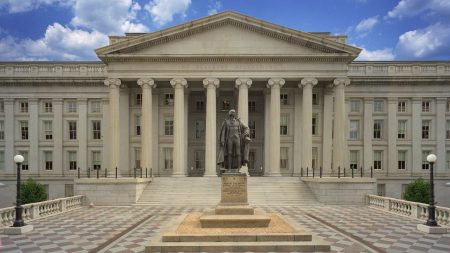Halfpoint Images/Getty Images
Key takeaways
- Both high-yield savings accounts and money market funds provide safe and accessible places to park your cash, but they come with a few key differences.
- High-yield savings accounts are FDIC-insured up to $250,000 per account holder, while money market funds are not, though they’re still considered low-risk investments.
- Money market funds and high-yield savings accounts often respond quickly to Federal Reserve rate changes so the yield you earn can change over time.
- Both options are ideal for short-term savings but won’t generate significant long-term wealth or outpace investments like stocks.
Yields on money market funds and high-yield savings accounts surged to near-record highs in 2022 and 2023 as the Federal Reserve aggressively raised interest rates. While the Fed began cutting rates in September 2024, returns on these accounts and other short-term investments remain attractive — especially compared to the ultra-low rates that dominated the decade before 2021.
For those looking to build an emergency fund or set aside cash for a short-term goal, high-yield savings accounts and money market funds are great compound interest investments that offer a safe and accessible place to park your cash. Both options provide stability and liquidity, but there are key differences to consider.
Here’s what you need to know.
What is a high-yield savings account?
High-yield savings accounts are generally available through online banks and offer higher rates of interest than traditional bank savings accounts.
The national average savings account pays a 0.57 percent APY as of August 2025, according to Bankrate’s Average Savings Account Interest Rates Survey, while the best high-yield savings accounts come with interest rates around 4 percent.
High-yield savings accounts function similarly to traditional savings accounts and may limit the number of withdrawals you can make in a month. They’re also FDIC-insured, which means you’re covered up to $250,000 per account holder if your bank fails.
You won’t earn significant long-term returns, like you might by investing in stocks in a brokerage account or Roth IRA, but a high-yield savings account can make your cash work harder without taking on risk.
What is a money market fund?
Money market funds are short-term investments offered by banks, brokers and mutual fund companies that invest in short-term securities such as certificates of deposit, U.S. Treasury bills and commercial paper. Money market funds aim to maintain a share price of $1. There have only been a few instances where a fund fell below that level, or “broke the buck,” but the funds are not guaranteed.
Yields offered by money market funds depend on the current interest rate environment and tend to respond quickly to Fed policy. Money market funds can be a nice way to earn a return on your short-term savings, but aren’t likely to build significant wealth over time.
Be sure to pay attention to a money market fund’s expense ratio, which is the fee charged by the fund. This comes out of the return you earn as an investor, so it’s better to have low fees, all else being equal.
Money market funds vs. money market accounts
Many investors confuse money market funds with money market accounts. Money market accounts are products offered by banks or credit unions as a savings tool and come with FDIC insurance, whereas money market funds are not FDIC-insured.
If you’re looking for a place to keep your cash while earning a competitive return and don’t mind a little risk, a money market fund may be a good option. Since it’s an investment product, there’s a small chance you could lose money. However, money market funds generally offer higher yields than traditional savings accounts, making them attractive for investors who want liquidity while earning some growth.
On the other hand, money market accounts are FDIC-insured. This makes them a great option if you need a secure place to store emergency funds or savings for short-term goals. While the interest rates on money market accounts are typically lower than money market funds, they’re still higher than standard savings accounts.
When comparing these two options, consider how often you’ll need access to your funds. Money market accounts allow easy withdrawals and limited check-writing privileges, making them more convenient for everyday expenses. Money market funds, while highly liquid, usually require selling shares to access your money, which may take an extra day to process.
High-yield savings accounts vs. money market funds
High-yield savings accounts and money market funds both present solid choices when it comes to investing your savings. Here’s what to know about each:
| High-yield savings accounts | Money market funds | |
|---|---|---|
| Are you able to access your money? | Yes, but may be limited to a certain number of monthly withdrawals | Yes |
| Is the account FDIC-insured? | Yes | No, but low risk |
| What is the interest rate? | Significantly higher than traditional savings accounts | May be higher than high-yield savings accounts |
| Are there fees? | None | Whatever the fund’s expense ratio is |
Who should consider a money market fund?
- Investors looking for a short-term place to park cash with higher potential returns.
- Those who are comfortable with slight fluctuations in returns.
- Individuals with large cash reserves who want liquidity without full market exposure.
- People saving for near-term investments but seeking better yields than a savings account.
- Those who don’t need immediate, day-to-day access to their funds.
Who should consider a high-yield savings account?
- Savers who prioritize FDIC protection.
- Individuals building an emergency fund that needs to be accessible at any time.
- Those who want a return on their cash without investment risk.
- People who may need quick access to their funds.
- Anyone with a lower risk tolerance who prefers a straightforward savings option.
Bottom line
High-yield savings accounts and money market funds are good ways to earn a decent return on your cash and short-term savings and are a good fit for beginner investors. The key difference between the two is that high-yield savings accounts are FDIC-insured, while money market funds are not. However, money market funds are considered very low-risk investments and may even have higher interest rates than high-yield savings accounts.
— Bankrate’s Rachel Christian contributed to an update.
Why we ask for feedback
Your feedback helps us improve our content and services. It takes less than a minute to
complete.
Your responses are anonymous and will only be used for improving our website.
Help us improve our content
Read the full article here









